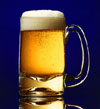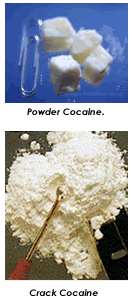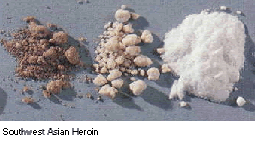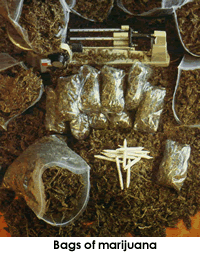Previous Page | Right click this page to print.
Unit 8
Addictive Behavior: Substance & Process Addictions
Addictive Behavior
Definitions
- What is Addiction?
- Pattern of reliance on a substance or behavior to produce a mood change despite harmful consequences
- Habit vs. Addiction
- Typically examine wants vs. needs to determine when someone has crossed the line between habit and addiction.
Models of Addication
- Disease Model
- View addiction as a chronic illness, as opposed to viewing it as just a failure on the addicts part to be “strong.”
- Biological Model
- Addiction is caused by some genetic or hormonal deficiency (family trend). Here it is viewed as a biochemical, metabolic or genetic disorder.
- Psychosocial
- Factors in the environment such as stress, relationships, social mores, and media all contribute to addictive behavior.
The Addictive Process (evolves over time)
- No Involvement
- Experimental
- Regular (habit)
- Harmful Consequences
- Compulsive Involvement
Addictive Characteristics
- Tolerance
- Decrease effect of drug with repeated use so ever larger doses are needed to elicit the same results
- Withdrawal
- Physical disturbance that occurs when the addict cuts down or stops using.
- Craving
- Strong desire to continue taking drug which indicates a psychological dependence.
Characteristics of Addictive Behavior
- Pathological Behavior
- Compulsion, loss of control and continued involvement.
- Denial
- Ain’t just a river in Egypt. A hallmark of addiction, can’t or won’t admit problem exists.
- Relapse
- Falling back in to a pattern of addictive behavior.
Types of Addiction
Substance Abuse
Most Commonly Used Drugs
  |
 |
 |
 |
 |
|
Alcohol
U.S. Statistics
[Source of stats]
- accounts for 44% of all MVA deaths
- alcohol is linked with
- 50% of all homicides,
- 33% of all suicides, and
- 66% of all assault
Factors That Influence Alcohol Absorption
- Binge Drinking
- women > 4 drinks in a row
- men > 5 drinks in a row
- Concentration of drink
- 12 oz. “normal strength” beer
- 1.5 oz. Liquor
- 3-5 oz. wine
- Amount of food in stomach
- Carbonation
- Highly carbonated beverages (champagne) will reach the blood stream faster than non-carbonated.
- Weight/Body Fat
- Heavier people have larger body surfaces through which to diffuse alcohol
- Sex
- A woman is more likely to have more body fat and less water in her body tissues than a man of the same weight.
- Women have 1/2 as much “Alcohol Dehydrogenase” as men.
- Alcohol is absorbed more quickly during the premenstrual phase of a women’s cycle.
- Alcohol Consumption
- Frequency: How often a person drinks
- Number of days or occasions
- Quantity: How much the person drinks
- The amount ingested on a given occasion
- Identifying “light” or “moderate” consumption is not really the issue, “heavy” consumption is.
- Frequency: How often a person drinks
- College Age Drinking Stats
National Institute of Alcohol Abuse and Alcoholism (NIH)- Consequences of excessive drinking affect virtually all college
campuses and students, whether they choose to drink or not.
- Second-hand effects
- Humiliation, unwanted sexual advances, property damage, study/sleep time disrupted, caring for an intoxicated friend are all secondhand effects.
- Consequences of excessive drinking affect virtually all college
campuses and students, whether they choose to drink or not.
- College Statistics (NIH)
Vital Stats (Hingson et. al. 2002)- 1,400 college students (18-24) die each year from alcohol-related accidents.
- 500,000 are unintentionally injured.
- 600,000 are assaulted by another student who has been drinking.
- 70,000 are victims of alcohol-related sexual assault or date rape
- 400,000 had unprotected sex and 100,000 report having been so intoxicated to know if they consented to having sex.
- 2.1 million students drove under the influence of alcohol last year.
- 2 out of 5 students have engaged in binge drinking at least once during the past 2 weeks.
- Colleges vary widely in binge drinking rates, a study done on one campus may not apply to others.
Number of Drinks Related to Body Weight
| # of Drinks |
100-119 |
120-139 |
140-159 |
160-179 |
180-199 |
200-219 |
| 6 |
0.23 |
0.19 |
0.16 |
0.14 |
0.13 |
0.11 |
| 5 |
0.19 |
0.16 |
0.13 |
0.12 |
0.11 |
0.09 |
| 4 |
0.15 |
0.12 |
0.11 |
0.09 |
0.08 |
0.08 |
| 3 |
0.11 |
0.09 |
0.08 |
0.07 |
0.06 |
0.05 |
| 2 |
0.08 |
0.06 |
0.05 |
0.05 |
0.04 |
0.04 |
| 1 |
0.04 |
0.03 |
0.03 |
0.02 |
0.02 |
0.02 |
Tobacco & Nicotine
- Chief preventable cause of death in our society (U.S. Surgeon General)
- > 400,000 deaths per year attributed to tobacco use
- > 60 million addicted to nicotine (American Cancer Society)
Health Hazards
- Cardiovascular Disease (CVD)
- Lung cancer
- Cancers of the oral cavity, esophagus, and larynx.
Why People Smoke?
- Relaxation?
- Alertness?
- Social?
- Weight loss?
- Rituals involved?
- In the morning, after meals, in the car, with alcohol, etc.
- Withdrawal symptoms
- Nervousness, irritability, depression, headache, lack of concentration.
Alternatives to Smoking
- Smokeless tobacco?
- Many use this as an alternative; however, it poses many cancer risks as well.
- Cold turkey?
- Nicotine replacement products
- Behavior modification
- Clinical programs
Addictive Properties of Various Drugs
- Caffeine
- Found in colas, coffee, tea, etc. A CNS stimulant which increases alertness, increases heart rate, and stimulates urinary output. Hazards of over consumption include: sleep disruption, nervousness, headaches, heart palpitations, habit-forming & addictive.
- Marijuana
- Most commonly used illicit drug in the U.S. Common among college students. Effects of chronic use include: lowers brain and motor function, interferes with immunity, increases HR and BP, lung damage. It is a complex drug: tetrahydrocannibinol (THC) is the main ingredient that determines how "high" the user gets. Amount present in 1960’s: 1-5%; 2002: 8% or higher. Marijuana hasn’t been well established whether there is withdrawal associated with discontinued use. It can become a priority, interfering with other activities, relationships.
- Cocaine
- Stimulant, 2nd most common illicit drug, profound addictiveness, rush followed by crash
- Heroin
- Opiate, CNS Depressant, Resurgence, highly addictive, long withdrawals
- LSD
- Hallucinogen,“Acid”; Psychedelic drug, not too addictive, but potential for psychological problems
- Anabolic Steroids
- Estimated that 17-20% of college athletes use, heart damage, not addictive but possible compulsive reliance
- Ecstasy
- Entactogen, Mood enhancement drug, release serotonin and dopamine,increase body temp., hypertension, kidney failure, long term damage to serotonin neurons, addictive???
Process Addictions
Types
- Exercise
- Achieving a desired emotional state through extreme behavior
- Workaholism
- Work fills emotional voids
- Gambling
- “Disorder of impulse control”
- Shopping
- Spend now and worry later
- Sex
- Lack of control over sexual feelings and actions
Models of Addiction
- Disease Model
- View addiction as a chronic illness
- Biological Model
- Biochemical, metabolic or genetic disorder
- Psychosocial
- Factors in the environment such as stress, relationships, social mores and media contribute to addictive tendencies
Overcoming Addiction
Intervention
- Planned process of confrontation with the intent to break down the denial of the addict.
- Provide relevant information
- Provide support and encouragement
- Be empathetic
- Provide positive reinforcement
Treatment
- Self-help
- Oregon Help Line 1-877-270-STOP
- Support groups
- 200 different types of 12-step programs
- Individual counseling
- Clinical programs
Basic goals
- Promote healthy physical and emotional functioning.
- Stress management, problem solving, coping skills.
- Build self-esteem
- Develop support to reinforce behavior
- Prevent relapse
Previous Page | Right click this page to print.